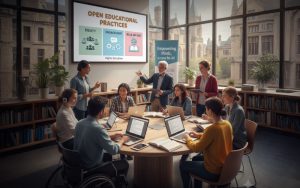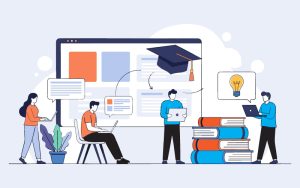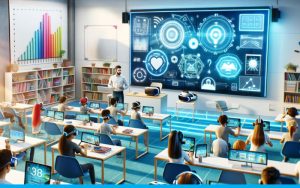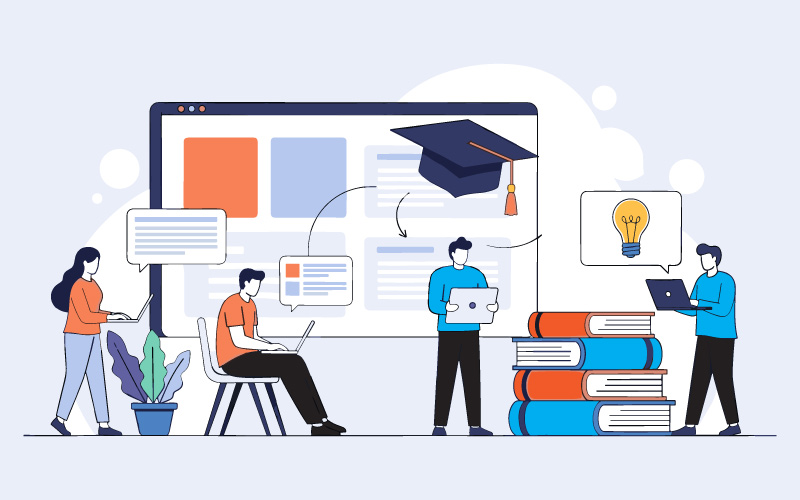Introduction: Redefining the Purpose of Higher Education
Traditionally, higher education has focused on preparing young adults for entry into the workforce. But in today’s fast-changing world — shaped by rapid technological shifts, industry disruption, and evolving workforce demands — this model is no longer sufficient. The role of higher education is expanding beyond degree completion to fostering lifelong learning, helping learners continually adapt and thrive throughout their professional and personal lives.
As academic leaders and education strategists reconsider their institution’s long-term vision, lifelong learning is emerging as a cornerstone of institutional resilience, relevance, and reach.
What is Lifelong Learning — and Why Now?
Lifelong learning refers to the ongoing, voluntary, and self-motivated pursuit of knowledge for personal or professional development. It’s not new, but its urgency has intensified due to:
- Shortening skill life cycles — According to the World Economic Forum, over 50% of all employees will need reskilling by 2025.
- Automation and AI — Disruption is accelerating across industries, demanding continuous upskilling.
- Non-linear career paths — Professionals now switch roles, industries, or specializations multiple times in their careers.
- Democratization of learning — Digital platforms, MOOCs, and micro-credentials have made quality education more accessible.
The Strategic Role of Higher Education Institutions
Tertiary institutions are uniquely positioned to lead the lifelong learning movement. But doing so requires a rethink of academic offerings, partnerships, and delivery models.
1. From Degrees to Modular Learning
Institutions are increasingly unbundling their programs into shorter, stackable formats. These include:
- Micro-credentials
- Digital badges
- Certificates of specialization
- Short courses for working professionals
According to a 2023 report, micro-credential enrollments are growing at over 15% annually, especially in sectors like tech, healthcare, and business.
2. Serving New Audiences
Lifelong learners aren’t 18–24-year-old undergraduates. They are:
- Mid-career professionals seeking promotion or change
- Older adults re-entering the workforce
- Stay-at-home caregivers returning to work
- Retirees pursuing intellectual fulfillment
This necessitates new pedagogical approaches, scheduling flexibility, and personalized pathways.
3. Rethinking Institutional Identity
Forward-looking institutions like Harvard Extension School, MITx and Open University UK have embraced lifelong learning as a strategic priority. They’re not just awarding degrees — they’re cultivating learning ecosystems that support learners at every stage of life.
Technology as a Lifelong Learning Enabler
Adaptive Learning Platforms
These platforms use AI to personalize content delivery based on individual learning behavior, enabling faster skill acquisition and retention.
Learning Experience Platforms (LXP)
Unlike LMS, which are course-centric, LXPs (like Degreed or EdCast) are learner-centric, curating content from multiple sources and enabling self-paced, continuous learning.
Credentialing and Blockchain
Blockchain-based credentials (e.g., MIT Digital Certificates) allow learners to own and port their achievements, supporting a lifelong academic identity.
Industry and Employer Partnerships
A successful lifelong learning strategy integrates academic rigor with real-world relevance. Institutions must:
- Partner with employers to co-design curriculum
- Integrate industry certifications into academic pathways
- Offer continuing education that’s aligned with emerging roles
Example: Georgia Tech’s OMSCS (Online MS in Computer Science), created in partnership with AT&T and Udacity, serves thousands of working professionals globally at a fraction of the traditional cost.
Challenges and Considerations
Institutional Readiness
Many universities are structured around traditional, time-bound degree programs. Lifelong learning requires:
- Agility in program design and approval
- Faculty development for digital and adult learning
- Reconfigured funding and business models
Equity and Access
Lifelong learning must address digital divides, affordability, and inclusive design — ensuring that non-traditional learners aren’t left behind.
Assessment and Recognition
How do we validate informal or short-form learning? Institutions must embrace new frameworks for competency-based assessment and credit recognition.
Lifelong Learning as a Strategic Opportunity
For higher education institutions, embracing lifelong learning is not just about meeting demand — it’s about future-proofing their mission. By becoming hubs for continuous education, institutions can:
- Extend their reach beyond campus boundaries
- Build lasting relationships with learners over decades
- Drive impact in local economies and global labor markets
- Differentiate themselves in an increasingly competitive landscape
Conclusion: Learning Never Stops — And Neither Should Higher Education
The future of higher education is not a linear journey from freshman year to graduation. It’s a lifelong continuum where institutions play a critical role in shaping adaptable, empowered, and future-ready citizens. Lifelong learning isn’t just a buzzword — it’s a strategic imperative for any institution seeking to remain relevant in a dynamic, digital world.
As decision-makers in academia, the call to action is clear: integrate lifelong learning into your core strategy, not just your extension programs. Your learners — and your institution’s future — depend on it.
- Debdut Pramanickhttps://www.mitrmedia.com/resources/blogs/author/debdutp/
- Debdut Pramanickhttps://www.mitrmedia.com/resources/blogs/author/debdutp/
- Debdut Pramanickhttps://www.mitrmedia.com/resources/blogs/author/debdutp/
- Debdut Pramanickhttps://www.mitrmedia.com/resources/blogs/author/debdutp/









